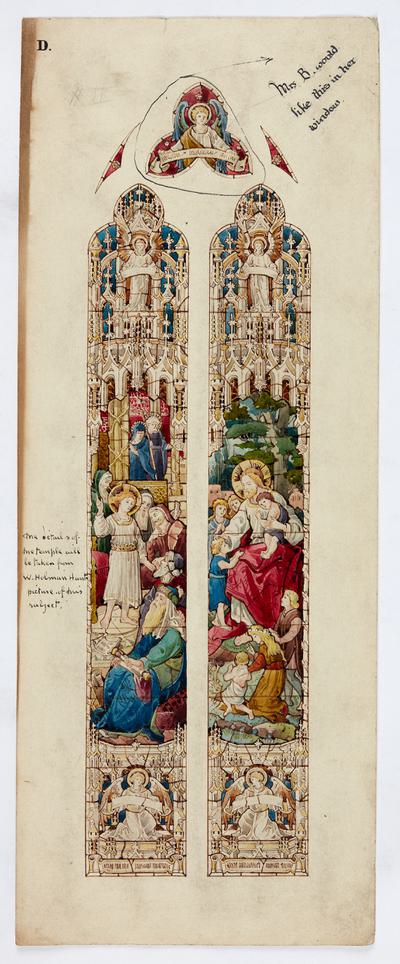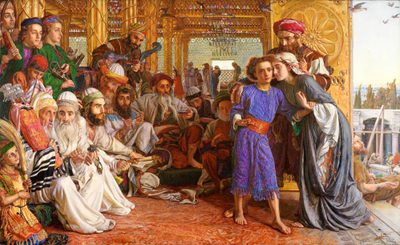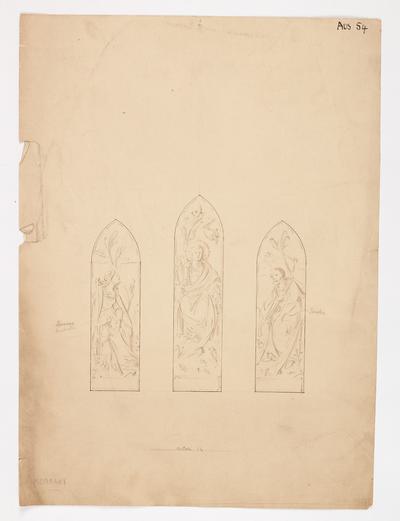News Story
Birmingham is famous for metalworking, but did you know it was also an important centre for the production of stained glass?
We have just added images of hundreds of stained glass designs by John Hardman & Co. to our online images website for you to explore. Hardman was a Birmingham-based firm which began making stained glass in 1845. They were one of the country’s leading manufacturers of stained glass in the 19th and 20th centuries, creating windows for churches and houses all over the world.
There is a very large archive of documents and designs relating to Hardman, which is divided between the Library of Birmingham and Birmingham Museums Trust. The Library holds Hardman’s business records, whilst the Museum looks after thousands of designs related to the company. Between them, these sources provide an incredible record of the workings and output of this influential firm.
The stained glass designs we’ve made available online were made for clients so that they could see Hardman’s plans for their windows. They tell us a lot about the company’s working process. Many designs have notes on them suggesting changes, while others were rejected altogether. Some are very sketchy or are incomplete, but others are highly detailed. All are works of art in their own right.

One design for a window for Moseley Baptist Church depicts Christ in the Temple as a child. It is annotated: ‘the details of the temple will be taken from W. Holman Hunts picture of this subject’. This design dates from 1898, just a couple of years after William Holman Hunt’s painting ‘The Finding of the Saviour in the Temple’ was acquired by Birmingham Museum & Art Gallery. This suggests that artists from Hardman visited the Museum and found inspiration in its collection.


The designs also provide more information about the company’s clientele, especially as many of these windows no longer exist. Most Hardman windows were destined for buildings in Britain and Ireland, but many went overseas, including to the USA and to countries which were then part of the British Empire such as Canada, Australia, New Zealand, South Africa and India. Some places commissioned multiple windows from Hardman, others just a single one. Some windows went to churches in big cities but others went to tiny settlements. One design is for a little 19th-century mission church in the village of Moeraki in New Zealand. It features the Māori leader Matiaha Tiramōrehu, making this one of the earliest depictions of a Māori in stained glass.

Most of Hardman’s clients were churches, but there are also some secular designs for individuals and businesses. One design from 1883 is for Marris and Norton, a furniture retailer on Corporation Street. It features scenes from Shakespeare’s play ‘A Midsummer Night’s Dream’.

Students from the MA in History of Art and Curating at the University of Birmingham assisted with cataloguing and photographing these designs, and we want to thank them for their fantastic work on this project. We are continuing to catalogue this sizable collection with their help and hope to add further images to the online image website in the future, making them more accessible for everyone.
By Rebecca Unsworth, Research Assistant (Decorative Art)
